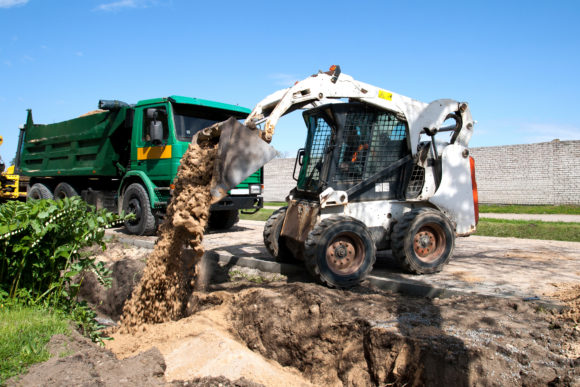Last month, I shared a claim I had consulted on involving mobile equipment. The adjuster had incorrectly denied the claim because he failed to read both the definition of “mobile equipment” and the exclusion that referenced the definition. When determining coverage, one must review the entire policy, a task which admittedly sometimes takes the form of a “Where’s Waldo?” search or worse. Keep reading.
This month, we’ll examine that premise in the context of a personal lines claim involving damage to an expensive riding lawn mower. Sometimes, a cited policy provision appears to exclude coverage, but coverage may be found elsewhere in the policy.
A homeowner was insured under a 1991 ISO HO 00 03 policy. A strong storm had downed several large tree branches across his seven-acre residence premises. His brother-in-law had brought his John Deere lawn tractor over to help pull larger limbs into a brush pile. While parked under a tree, a substantial limb fell from the tree and damaged his vehicle. Since he was helping his brother-in-law, the homeowner, he felt that his brother-in-law’s insurance should pay for the damage.
When the claim was submitted to the homeowner’s insurer, the adjuster viewed the damage to a third party’s vehicle as a Section II liability claim under the policy. While the liability land motor vehicle exclusion didn’t apply, the adjuster said that was immaterial because the liability insuring agreement was never triggered since the named insured was not legally liable for the damage caused by a falling tree limb.
However, the liability section of the policy did have a “no-fault” Additional Coverage called “Damage to Property of Others.” This “goodwill” coverage does not require any legal liability on the part of an insured and, while it includes a land motor vehicle exclusion, the exclusion does not apply to this claim.
Unfortunately, though, the Additional Coverage only covers property damage “caused by the insured.” The adjuster advised that, since the insured did not cause the tree limb to fall, this Additional Coverage does not apply either.
The bottom line is that the adjuster correctly denied the claim based on the language cited in the policy. But, that doesn’t mean the claim isn’t covered, because the adjuster failed to fully explore the policy. Coverage, in fact, can be found in Section I – Property Coverages.
That could be a good thing because it’s not subject to the $500 sublimit in the Section II Damage to Property of Others coverage (though it is subject to a deductible).
It’s a common misconception that homeowners policies only cover property owned or rented by an insured. In the case of the ISO form, it also covers property used by an insured and property owned by noninsureds as follows:
COVERAGE C – Personal Property
We cover personal property owned or used by an “insured” while it is anywhere in the world. At your request, we will cover personal property owned by others while the property is on the part of the “residence premises” occupied by an “insured”; [emphasis added]
Since the named insured has requested coverage for damage to his brother-in-law’s vehicle that occurred on his premises, the policy should respond if the property is not excluded and the damage is caused by a covered peril.
Under the Coverage C – Property Not Covered provision, excluded are “Motor vehicles or all other motorized land conveyances.” However, an exception is made for “…vehicles or conveyances not subject to motor vehicle registration which are…Used to service an ‘insured’s’ residence….”
Since the lawn tractor was being used to service the insured’s residence premises, the motor vehicle exclusion does not apply.
As for perils, coverage for damage to personal property is provided on a named perils basis on the unendorsed HO 00 03 policy. While there may be an argument that the damage was proximately caused by “windstorm,” a covered peril, that really doesn’t matter because a better and inarguable choice is the peril of “falling objects,” which is exactly what caused the damage.
Given that no other exclusions apply, the claim should be covered under Section I of the HO 00 03, less the policy deductible. If the brother-in-law has a homeowners policy that covers the damage, he might seek recovery for the deductible under his own policy.
But, how about the Other Insurance clause in the homeowner’s HO 00 03 policy? It says, “If a loss covered by this policy is also covered by other insurance, we will pay only the proportion of the loss that the limit of liability that applies under this policy bears to the total amount of insurance covering the loss.”
Does this mean that the homeowner’s policy only covers a portion of the damage? Well, that depends on whether the brother-in-law’s homeowners policy covers the damage and that, of course, depends on what his homeowners policy says. If it’s not an ISO form, the only way to answer that question is to carefully read that policy. If it’s an ISO form, then it depends on the edition date.
For example, if the brother-in-law also had a 1991 ISO HO 00 03 policy, it covers damage to a land motor vehicle “used to service an ‘insured’s’ residence.” So, as long as he, at some time, uses the vehicle to service his own residence, he has worldwide property damage coverage for it.
However, in 2000, ISO changed the policy language so that coverage is provided only if the vehicle is “used solely to service an ‘insured’s’ residence.” Since he is servicing a residence other than his own, he has no coverage under the 2000 edition of the policy and must rely on coverage under the homeowner’s 1991 policy. If the homeowner also had a 2000 policy instead of the 1991 policy, there would be no coverage under either form.
Then, in the 2011 edition of the ISO form, the policy language was again revised so that coverage is provided if the vehicle is “used solely to service a residence.” Since the vehicle was being used to service “a” residence, it appears to be covered under the 2011 policy. However, there is that pesky word “solely.” In order to know for sure if there is coverage, we need to know if the vehicle was ever used by the brother-in-law to service a premises that was not a residence.
So, the next time a customer asks, “Does my homeowners policy cover my lawn mower?”, either “Maybe” or “Possibly” will work as an answer.
Topics Auto Property Liability Homeowners
Was this article valuable?
Here are more articles you may enjoy.



 Kansas Man Sentenced to Probation for Insurance Fraud
Kansas Man Sentenced to Probation for Insurance Fraud  Freight Broker Says $400K in Lobster Meat Stolen in Fictitious Pickup
Freight Broker Says $400K in Lobster Meat Stolen in Fictitious Pickup  Good Times for US P/C Insurers May Not Last; Auto Challenges Ahead
Good Times for US P/C Insurers May Not Last; Auto Challenges Ahead  Howden US Tells Judge Brown & Brown Employees Fled Due to ‘Mistreatment’
Howden US Tells Judge Brown & Brown Employees Fled Due to ‘Mistreatment’ 



